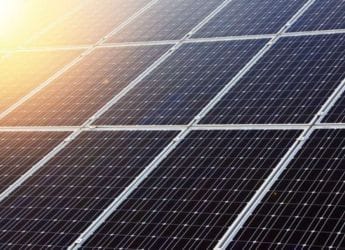- Home
- Science
- Science News
- Battery Breakthrough Could Make Solar Panels Cheaper and More Powerful
Battery Breakthrough Could Make Solar Panels Cheaper and More Powerful
A new salt-forming method gives perovskite solar cells a record 27.2% efficiency and improved long-term stability.

Photo Credit: CC0 Public Domain
A new ion-balancing method helps perovskite solar cells reach record efficiency and stronger durability
Perovskite solar cells have reached 27.2 per cent efficiency following a breakthrough single-material treatment developed by two groups of researchers trying to resolve a problem that has been dogging the emerging technology for over a decade: an uneven distribution of chlorine content in the material. Chlorine ions clumping while heating was prevented by adding potassium binoxalate to the perovskite preparation, as per a study conducted at the Institute of Semiconductors, Chinese Academy of Sciences. This straightforward step enhances energy conversion efficiency and operational stability, pushing perovskite one step closer to commercialisation with cost-effective and high-efficiency solar-energy applications.
Perovskite Solar Cells Reach 27.2% Efficiency With Potassium Additive Boosting Chlorine Uniformity
According to a report published in Science, the team found that a chemical used in manufacturing—methylammonium chloride—tended to gather at the top and bottom of the perovskite layer during heating. This caused power loss and long-term defects. Potassium binoxalate was introduced to the liquid mixture, which allowed potassium ions leached from the material to combine with chlorine, preventing them from aggregating into crystal clusters across the film.
The simple tuning ensures a uniform layer, which reduces defects, prevents premature failure and maintains the material's stability under intense operation – a major upgrade for high-performance devices, say the researchers.
The solar cells independently measured a 27.2% efficiency, also marking the world's highest under one-sun illumination, and kept an output of 86.3% after continuing to operate for more than 1,500 hours in full sun, which translates into substantial endurance triumphs as well.
The group mentioned that some nonuniform parts and buried-layer imperfections still exist, and subsequent work will concentrate on decreasing these problems. Even so, experts suggested the improvement in chlorine distribution marks a major move toward commercially ready perovskite solar technology.
Get your daily dose of tech news, reviews, and insights, in under 80 characters on Gadgets 360 Turbo. Connect with fellow tech lovers on our Forum. Follow us on X, Facebook, WhatsApp, Threads and Google News for instant updates. Catch all the action on our YouTube channel.
Related Stories
- Samsung Galaxy Unpacked 2025
- ChatGPT
- Redmi Note 14 Pro+
- iPhone 16
- Apple Vision Pro
- Oneplus 12
- OnePlus Nord CE 3 Lite 5G
- iPhone 13
- Xiaomi 14 Pro
- Oppo Find N3
- Tecno Spark Go (2023)
- Realme V30
- Best Phones Under 25000
- Samsung Galaxy S24 Series
- Cryptocurrency
- iQoo 12
- Samsung Galaxy S24 Ultra
- Giottus
- Samsung Galaxy Z Flip 5
- Apple 'Scary Fast'
- Housefull 5
- GoPro Hero 12 Black Review
- Invincible Season 2
- JioGlass
- HD Ready TV
- Laptop Under 50000
- Smartwatch Under 10000
- Latest Mobile Phones
- Compare Phones
- OPPO Reno 15 Pro
- OPPO Reno 15
- Vivo Y500 Pro
- Realme GT 8 Pro Aston Martin F1 Limited Edition
- Huawei Mate 70 Air
- Moto G57
- Moto G57 Power
- Motorola Edge 70
- Asus ProArt P16
- MacBook Pro 14-inch (M5, 2025)
- iQOO Pad 5e
- OPPO Pad 5
- Fastrack Revoltt FR2 Pro
- Fastrack Super
- Acerpure Nitro Z Series 100-inch QLED TV
- Samsung 43 Inch LED Ultra HD (4K) Smart TV (UA43UE81AFULXL)
- Asus ROG Ally
- Nintendo Switch Lite
- Haier 1.6 Ton 5 Star Inverter Split AC (HSU19G-MZAID5BN-INV)
- Haier 1.6 Ton 5 Star Inverter Split AC (HSU19G-MZAIM5BN-INV)

















